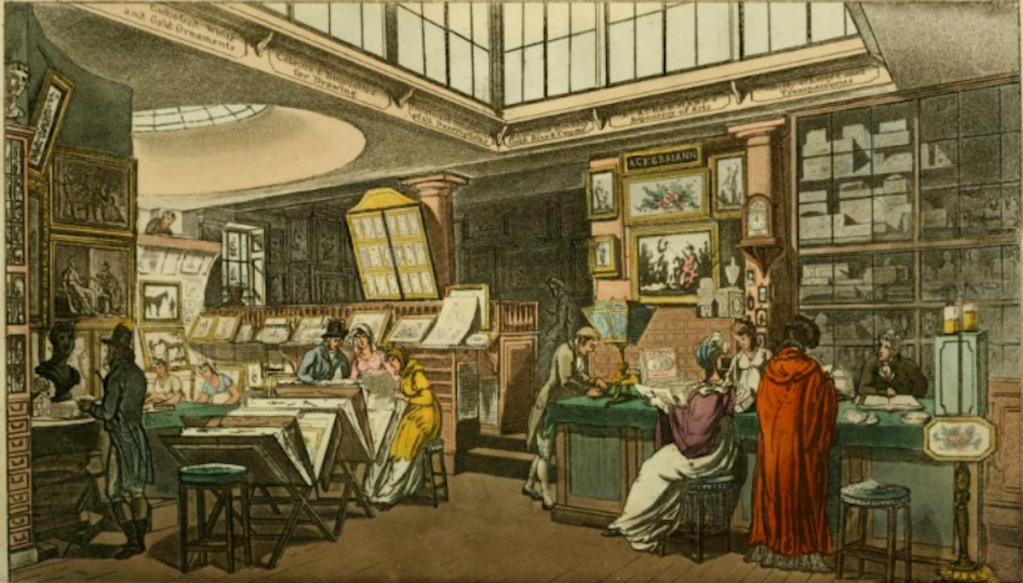Rudolph Ackermann (20 April 1764 in Schneeberg, Electorate of Saxony – 30 March 1834 in Finchley, London) was an Anglo-German bookseller, inventor, lithographer, publisher and businessman.
An able artist in his own right, in 1795 he established a print-shop and drawing-school at 96 Strand. Ackermann set up a lithographic press and began a trade in prints. He later began to manufacture colours and thick carton paper for landscape and miniature painters. Within three years the premises had become too small and he moved to 101 Strand, in his own words “four doors nearer to Somerset House“, the seat of the Royal Academy of Arts.
Between 1797 and 1800 Ackermann rapidly developed his print and book publishing business bringing together wide variety of talented artists and printmakers including Thomas Rowlandson, Isaac Cruikshank, John Bluck, Theodore Lane, Henry Singleton, Maria Cosway, F. J. Manskirchten, J. C. Stadler, J. H. Schultz, Henri Merke, Thomas Sutherland, Nicholas Heidelhoff, Augustus Pugin, and G. M. Woodward in numerous projects to produce both individual prints as well as illustrations for books and magazines, encompassing many different genres including topography, caricature, portraits, transparencies and decorative prints.
In 1809 he applied his press to the illustration of Repository of Arts, Literature, Fashions, which appeared monthly until 1829, by when forty volumes had appeared. The Repository documented the changing classicising fashions in dress and furniture of the Regency; Thomas Rowlandson and other distinguished artists were regular contributors. William Combe and Rowlandson’s parody, Dr Syntax in search of the Picturesque first appeared in parts in Ackermann’s Poetical Magazine and was then reissued as a bestselling separate book. Ackermann also published Rowlandson’s masterpiece The English Dance of Death (2 volumes 1816). He introduced from Germany the fashion of the once popular Literary Annuals, beginning in 1823 with Forget-Me-Not; and he published many illustrated volumes of topography and travel, including The Microcosm of London (3 volumes, 1808–1811), Westminster Abbey (2 volumes, 1812), The Rhine (1820), The Seine (1821), and The World in Miniature (43 volumes, 1821–1826).
